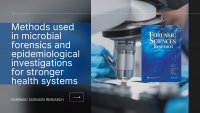Establishing and maintaining a national microbial forensic system to strengthen capacities in conducting forensic and epidemiological investigations should be prioritised by all countries, accompanied by a national policy that sets the legislative framework and provides for the system’s financial requirements.
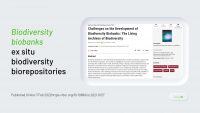
Challenges on the Development of Biodiversity Biobanks: The Living Archives of Biodiversity
In this review, we highlight the necessity for biodiversity biorepositories by presenting their significant role in health, biodiversity, linking of big data, other translational research, and biodiversity conservation efforts.
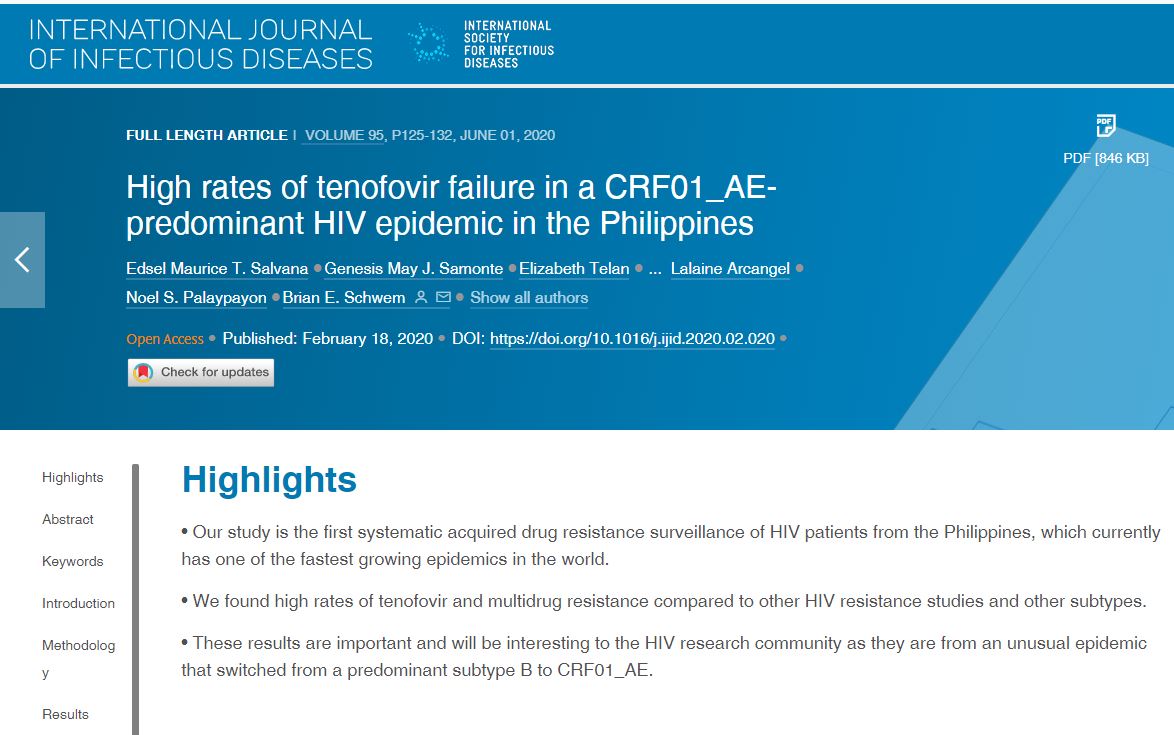
High rates of tenofovir failure in a CRF01_AE-predominant HIV epidemic in the Philippines
The Philippines has the fastest growing HIV epidemic in the Asia-Pacific. This increase was accompanied by a shift in the predominant HIV subtype from B to CRF01_AE. Increasing evidence points to a difference in treatment responses between subtypes. We examined treatment failure and acquired drug resistance (ADR) in people living with HIV (PLHIVs) after one year on antiretrovirals (ARVs).
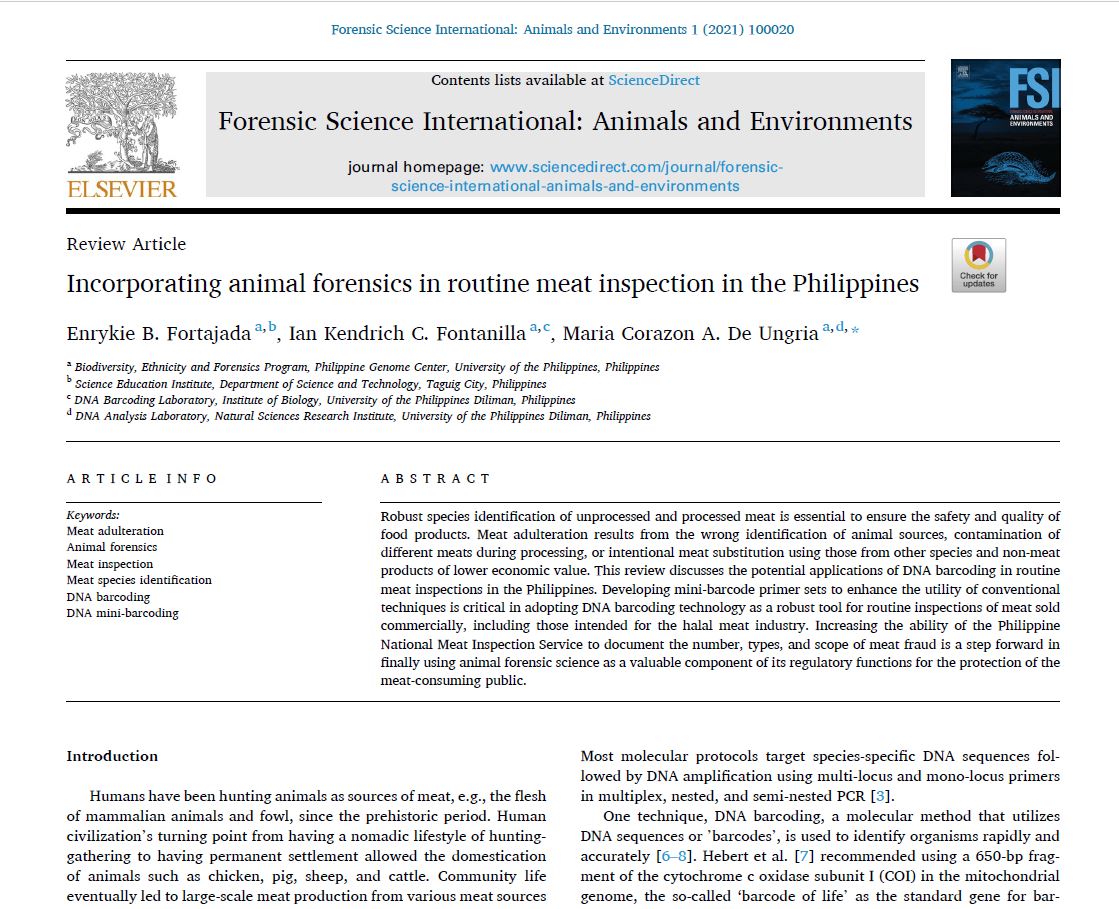
Incorporating animal forensics in routine meat inspection in the Philippines
Developing mini-barcode primer sets to enhance the utility of conventional techniques is critical in adopting DNA barcoding technology as a robust tool for routine inspections of meat sold
commercially, including those intended for the halal meat industry.
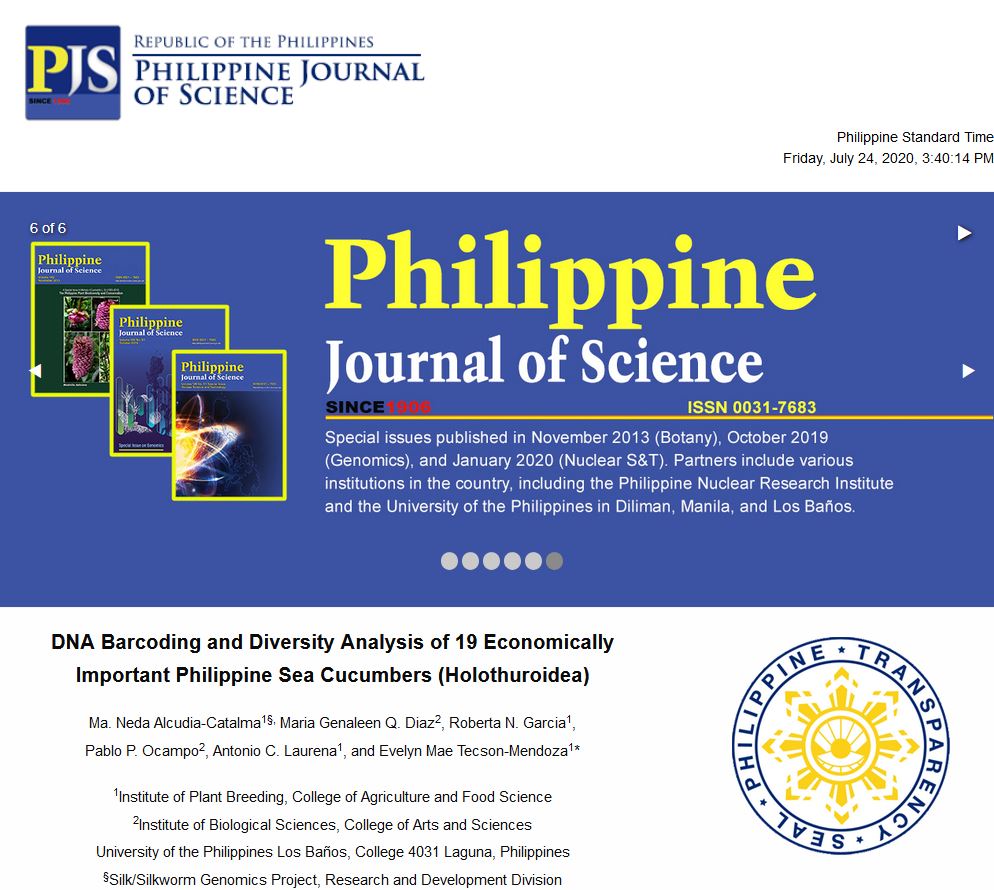
DNA Barcoding and Diversity Analysis of 19 Economically Important Philippine Sea Cucumbers (Holothuroidea)
This study established the DNA barcodes of 19 economically important Philippine sea cucumbers belonging to Class Holothuroidea under Phylum Echinodermata using the cytochrome c oxidase I (COI) gene.

Transcriptome Analysis of ‘Philippine Lono Tall’ Coconut (Cocos nucifera L.) Endosperm Reveals Differential Expression of Genes Involved in Oil Biosynthesis
The ‘Philippine Lono Tall’ (PLNT) is a variant of the more common ‘Philippine Laguna Tall’ (LAGT), which produces fruits with soft endosperm and reported higher fat content. To understand patterns of fatty acid (FA) and oil accumulation in LAGT and PLNT fruits, transcriptomes of 6–7 month-old endosperm samples were analyzed by RNA-Seq. Quantitative PCR was performed to analyze the differential expression of selected genes related to oil biosynthesis. Further, oil samples from the PLNT endosperm were analyzed to determine their FA composition across developmental stages.
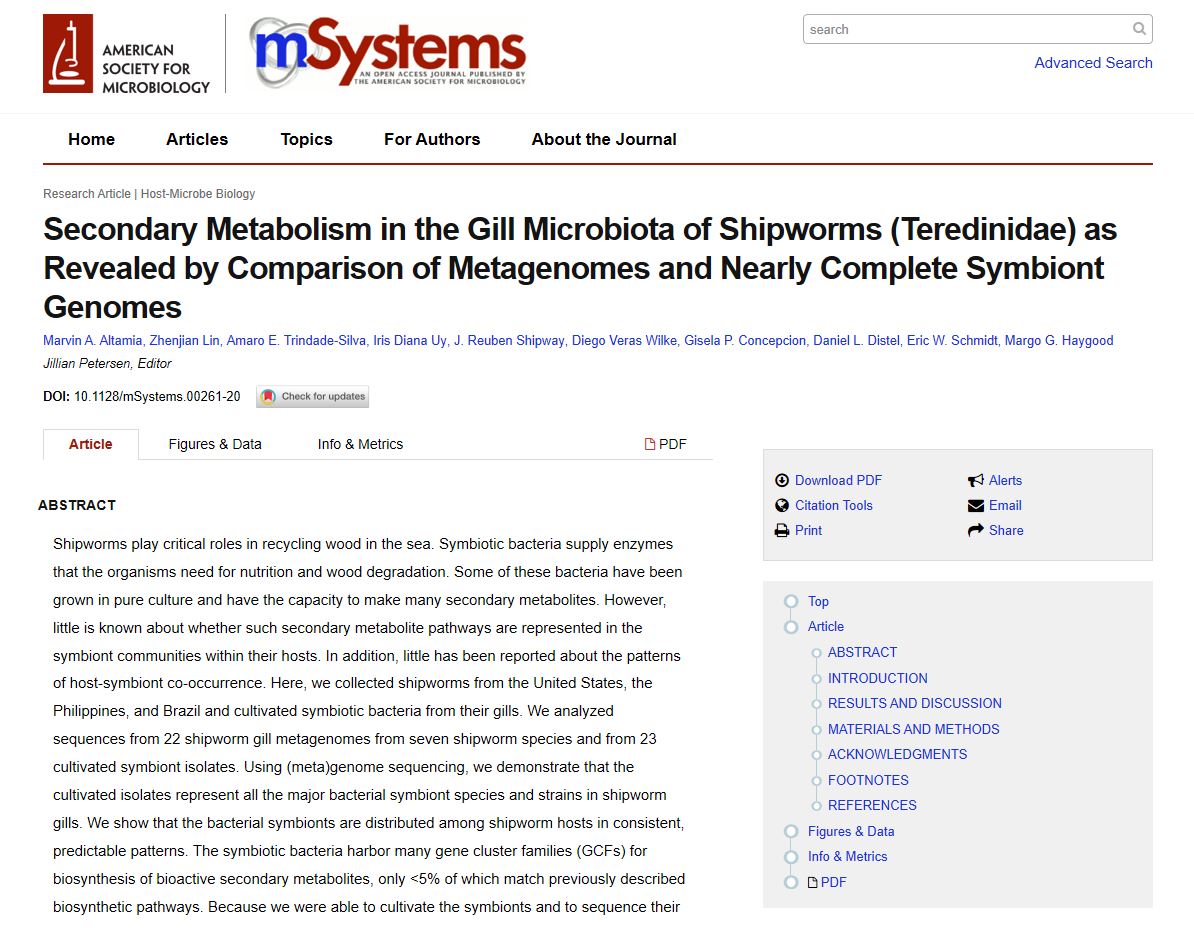
Secondary Metabolism in the Gill Microbiota of Shipworms (Teredinidae) as Revealed by Comparison of Metagenomes and Nearly Complete Symbiont Genomes
Shipworms play critical roles in recycling wood in the sea. Symbiotic bacteria supply enzymes that the organisms need for nutrition and wood degradation. Some of these bacteria have been grown in pure culture and have the capacity to make many secondary metabolites. However, little is known about whether such secondary metabolite pathways are represented in the symbiont communities within their hosts.
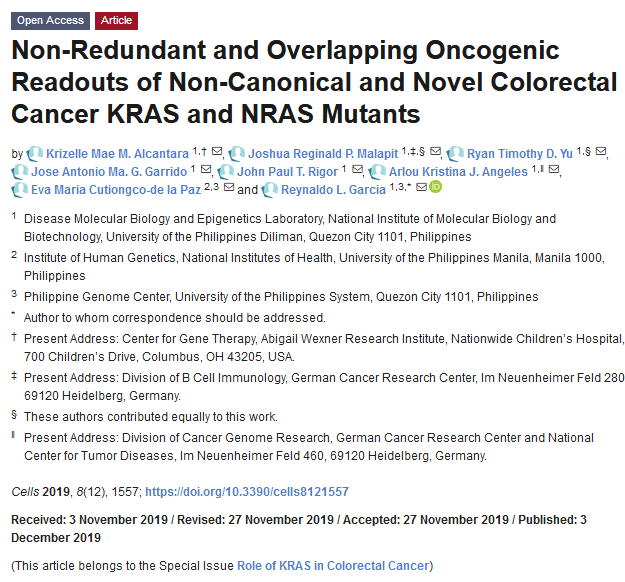
Non-Redundant and Overlapping Oncogenic Readouts of Non-Canonical and Novel Colorectal Cancer KRAS and NRAS Mutants
The efficacy of monoclonal antibodies targeting the epidermal growth factor receptor (EGFR) pathway for treatment of colorectal cancer (CRC) depends on predictive biomarkers that can identify likely responders or non-responders to therapy.

